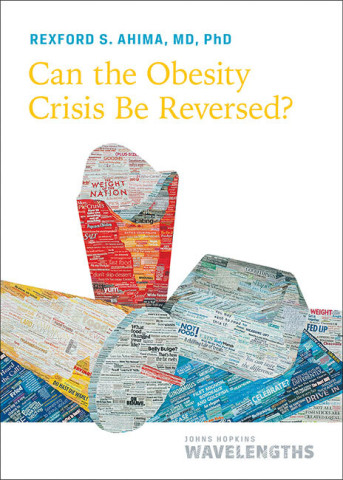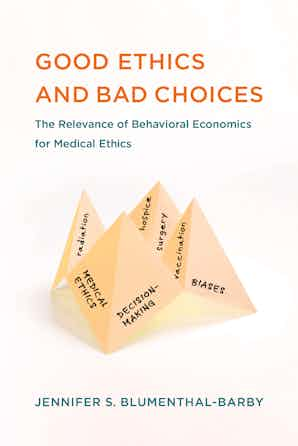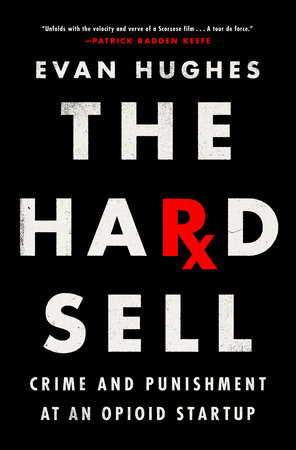Achieving Health for All: Primary Health Care in Action
18 de febrer 2022
17 de febrer 2022
The world is fat (2)
Can the Obesity Crisis Be Reversed?
From conclusions:
Ending the obesity epidemic will take both individual and collective action. Neither alone is sufficient. Individuals try to lose weight and keep it off, but the system is working against them. The route to population-wide weight loss will not be through trendy, unsustainable diets. It will be through widespread, appropriate, personalized, and comprehensive approaches.
The first action we all must take, no matter our size, is to educate ourselves about obesity—and you’ve been doing that by reading this book. People need to understand the structural, environmental, and genetic components of obesity. They need to see the ways in which systemic factors contribute to weight gain. The idea that obesity is a choice or a matter of willpower has been thoroughly disproved. The unfortunate fact that many people still believe this actively harms efforts to reduce obesity rates.
The government should first seek to change the public perception of obesity. Obesity is largely a result of structural forces, not just individual actions. A shared awareness of its origins could foster greater support for interventions that allow people to make healthier choices.
People and institutions need to work together to make healthy foods more accessible, affordable, appetizing, and convenient than unhealthy foods. Reversing the obesity crisis will require environments that promote physical activity and social movements that encourage people to get more exercise. We need to devote more resources to preventive efforts for all ages to improve our health.
To reverse the obesity crisis, we will need an all-hands-on-deck approach. Pharmacological advances, surgery, and other treatments should complement new policies, societal practices, and population-wide interventions that promote healthier diets and decrease food consumption. Improving the nation’s health may require implementing policies perceived as restricting personal freedoms that have long been granted to industries and individuals. But these policies will be essential to keeping the population healthy.
For individuals, the goal should be to reach and maintain your optimum weight, meaning the weight at which your body the optimal physical and mental health.
Outline of free ebook:
INTRODUCTION: Struggling with Obesity
CHAPTER 1: How Do People Gain Excess Weight?
CHAPTER 2: Why Are People Getting Heavier?
CHAPTER 3: What Are the Consequences of Obesity?
CHAPTER 4: What Are the Best Ways to Lose Weight?
CHAPTER 5: How to Reverse the Obesity Crisis
16 de febrer 2022
15 de febrer 2022
Geisinger (it is not any fiord) (2)
ProvenCare: How to Deliver Value-Based Healthcare the Geisinger Way
Outline
Why Geisinger?
2 The Problem
3 The Fix
4 Effective Governance
5 Getting Started
6 Enabling Change
7 ProvenCare Acute: Taking It to the Next Step
8 ProvenCare Chronic
9 ProvenHealth Navigator: Geisinger’s Advanced Medical Home
0 Leading and Managing a Successful Practice Transformation
1 ProvenCare Biologics
2 ProvenExperience
3 Future Vision
14 de febrer 2022
Understanding Ethics of AI
The Oxford Handbook of ETHICS OF AI
The approach to the ethics of AI that runs through this handbook is contextual in four senses:
• it locates ethical analysis of artificial intelligence in the context of other modes of normative analysis, including legal, regulatory, philosophical, and policy approaches,
• it interrogates artificial intelligence within the context of related modes of technological innovation, including machine learning, Big Data, and robotics,
• it is interdisciplinary from the ground up, broadening the conversation about the ethics of artificial intelligence beyond computer science and related fields to include other fields of scholarly endeavor, including the social sciences, humanities,and the professions (law, medicine, engineering, etc.), and
• it invites critical analysis of all aspects of—and participants in—the wide and continuously expanding artificial intelligence complex, from production to commercialization to consumption, from technical experts to venture capitalists to self-regulating professionals to government officials to the general public.
Outline
Part I. Introduction & Overview
1. The Artificial Intelligence of Ethics of AI: An Introductory Overview
2. The Ethics of Ethics of AI: Mapping the Field
3. Ethics of AI in Context: Society & Culture
Part II. Frameworks & Modes
4. Why Industry Self-regulation Will Not Deliver 'Ethical AI': A Call for Legally Mandated Techniques of 'Human Rights by Design'
5. Private Sector AI: Ethics and Incentives
6. Normative Modes: Codes & Standards
7. Normative Modes: Professional Ethics
Part III. Concepts & Issues
8. Fairness and the Concept of 'Bias'
9. Accountability in Computer Systems
10. Transparency
11. Responsibility
12. The Concept of Handoff as a Model for Ethical Analysis and Design
13. Race and Gender
14. The Future of Work in the Age of AI: Displacement, Augmentation, or Control?
15. The Rights of Artificial Intelligences
16. The Singularity: Sobering up About Merging with AI
17. Do Sentient AIs Have Rights? If So, What Kind?
18. Autonomy
19. Troubleshooting AI and Consent
20. Is Human Judgment Necessary?
21. Sexuality
IV. Perspectives & Approaches
22. Computer Science
23. Engineering
24. Designing Robots Ethically Without Designing Ethical Robots: A Perspective from Cognitive Science
25. Economics
26. Statistics
27. Automating Origination: Perspectives from the Humanities
28. Philosophy
29. The Complexity of Otherness: Anthropological contributions to robots and AI
30. Calculative Composition: The Ethics of Automating Design
31. Global South
32. East Asia
33. Artificial Intelligence and Inequality in the Middle East: The Political Economy of Inclusion
34. Europe's struggle to set global AI standards
Part V. Cases & Applications
35. The Ethics of Artificial Intelligence in Transportation
36. Military
37. The Ethics of AI in Biomedical Research, Medicine and Public Health
38. Law: Basic Questions
39. Law: Criminal Law
40. Law: Public Law & Policy: Notice, Predictability, and Due Process
41. Law: Immigration & Refugee Law
42. Education
43. Algorithms and the Social Organization of Work
44. Smart City Ethics
10 de febrer 2022
Unbiased Bioethics
Good Ethics and Bad Choices. The Relevance of Behavioral Economics for Medical Ethics
A book on how behavioral economics challenges some of the most fundamental tenets of medical ethics.
Go to Chapter 2: Bad Decisions? What Behavioral Economics Means for Patient Autonomy, Decision Quality, and Well-Being. Great topic.
The predominant ethos in medicine and medical ethics is to assume that patients are capable of making autonomous decisions that promote their own personal goals and values so long as they are properly informed of the options and their risks/benefits. Behavioral economics and the examples of decisional heuristics and biases discussed in the previous chapter significantly challenge this assumption. Behavioral economics shows that patients’ decisions can fail to be autonomous or to improve their well-being in ways beyond the usual ones that clinicians and bioethicists worry about (e.g., poorly informed consent, coercion, weakness of will). Specifically, in this chapter, I will argue that behavioral economics demonstrates that patients’ decision-making is often at risk for being (1) nonautonomous or autonomy impaired, (2) of poor quality, and (3) harmful to patients and their interests
A must read.
09 de febrer 2022
08 de febrer 2022
A new constitutional narrative
Law, Violence and Constituent Power. The Law, Politics and History of Constitution Making
The work argues that rather than the idea of a constitution being the result of political participation and deliberation, all power instead is based on violence. Hence the creation of a constitution is actually an act of coercion, where, through violence, one social group is able to impose itself over others. The book advocates that the presence of violence be used as an assessment of whether genuine constitutional transformation has taken place, and that the legitimacy of a constitutional order should be dependent upon the absence of killing and violence.
The main thesis of this book is that political orders are founded on violence and that constitutions, including those establishing liberal democracies, are the legal translation of this seminal coercion. In spite of the huge literature that has in recent times exploded around the constitution-making processes, the factor of violence has been scarcely considered in the assessment on the appearance of a brand-new constitutional framework. Instead, as had been developed by constitutionalism since the American and French eighteenth-century transitions, scholars have been more centred in observing the public involvement in the drafting of fundamental rules and, thus, associating popular mobilization and deliberation with constitutional legitimacy. Struggles were focused in building a narrative able to justify why a constitution enjoys supremacy over other popular representative institutions. To put it in a very reductive way: “if a constitution prevails over other norms adopted by the People’s representatives, that happened because the constitution was not passed by the representatives but by the People itself.” Here is, in a nutshell, the popular narrative on which constitutional legitimacy is grounded. But, as a historical analysis reveals, it has been violence, and not a collective action of “the People,” which usually (or always) has surrounded the formation of a constitution and ensured its effectiveness.
My idea is that, if instead of focusing on the devices of popular participation (elections to a constituent assembly, constitutional conventions, round-tables, or referenda) we pay attention to the coercions involved in such processes, we should conclude that wars, genocides, killings, or massive infringements of basic human rights cancel any narrative on the democratic grounds of fundamental laws.
Agree. In chapter 5 you'll find details about Secessionism in Catalonia, well explained.
Another book on the same topic:
07 de febrer 2022
Pharma, big pharma (5)
The Price of Health. The Modern Pharmaceutical Enterprise and the Betrayal of a History of Care
The Price of Health is the reveals the story of how the pharmaceutical enterprise took shape and led to the present crisis. The reputation of the pharmaceutical industry is suffering from self-inflicted wounds and its continued viability, indeed survival, is increasingly questioned. Yet the drug makers do not shoulder all the blame or responsibility for the current price crisis. Deeply researched, The Price of Health gives us hope as to how we can still right the ship, even amidst the roiling storm of a global pandemic.
06 de febrer 2022
Vaccines makers (2)
The Vaccine. Inside the Race to Conquer the COVID-19 Pandemic
The Vaccine draws back the curtain on one of the most important medical breakthroughs of our age; it will reveal how Doctors Sahin and Türeci were able to develop twenty vaccine candidates within weeks, convince Big Pharma to support their ambitious project, navigate political interference from the Trump administration and the European Union, and provide more than three billion doses of the Pfizer/BioNTech vaccine to countries around the world in record time.
04 de febrer 2022
03 de febrer 2022
02 de febrer 2022
The profits of opioid epidemic (3)
The Hard Sell. Crime and Punishment at an Opioid Startup
An absolute public health crisis, a crime without punishment. The outrageous behavior of an obscure drug company, Insys Therapeutics.
01 de febrer 2022
Option value of healthcare technologies
Broadening the Concept of Value: A Scoping Review on the Option Value of Medical Technologies
Key messages,
Traditionally, cost-effectiveness analyses have been conducted from the payer perspective, although the question of whether they should be expanded to take a broader perspective continues to animate a lively debate. Lately, the attention has focused on wider components of benefits, including the so-called option value. Our scoping review provides a comprehensive synthesis of conceptual and empirical aspects related to this topic recently introduced in the value assessment framework debate.
From a conceptual standpoint, the coexistence of 3 distinct definitions of option value in the literature emerging from our scoping review urges us to advocate for greater clarity of language in future research. We recommend using “insurance value” when referring to the utility of knowing that one may have access to a healthcare service should one need it in the future, as in definition A. Definition B mainly relates to decision making under uncertainty and specifically to the value of deferring uncertain unrecoverable decisions to a later time. In the evaluation of healthcare technologies and programs, this dimension of value originates from the possibility of delaying a reimbursement/adoption decision, if there is an expectation that better information on a technology’s (cost-) effectiveness will become available in the future—for example, because a new clinical trial reports its results. Because this definition is rooted in financial options theory and its application to capital investment decisions, we recommend using the term “real option value,” consistently with the terminology used outside the healthcare sector
According to the third definition, the claimed value does not originate from the uncertainty around a decision and the flexibility of deferring it, as in definition B, but rather it stems from the consideration that the value of a life-extending technology should also include the benefits of future treatments that otherwise would be precluded to patients if they did not benefit from improved survival. This definition of value pertains to the broader discussion on whether future costs and benefits not directly linked to the intervention being assessed should be accounted for when evaluating a technology.Therefore, we recommend that research related to this definition adopt the term “option value of survival.”
To date, no consensus has been reached yet
Les escaliers de la rue Chappe à Montmartre.











